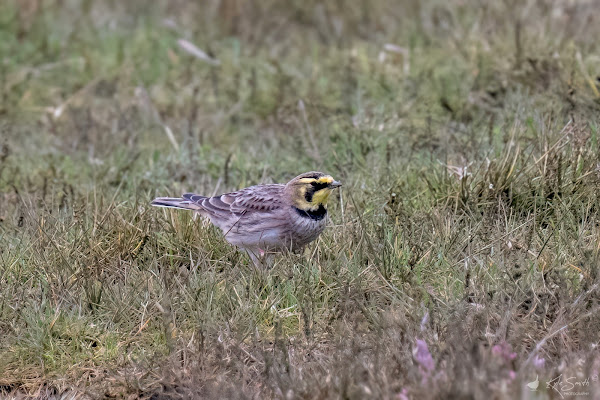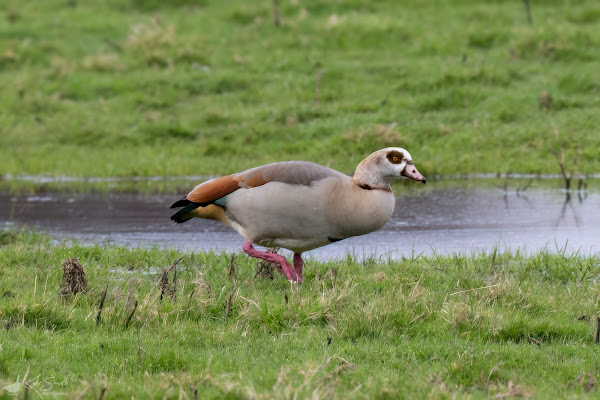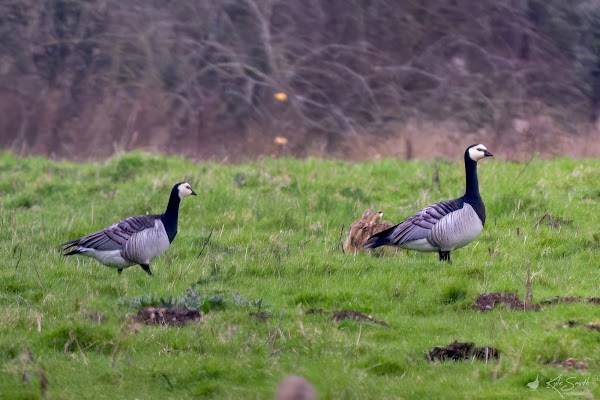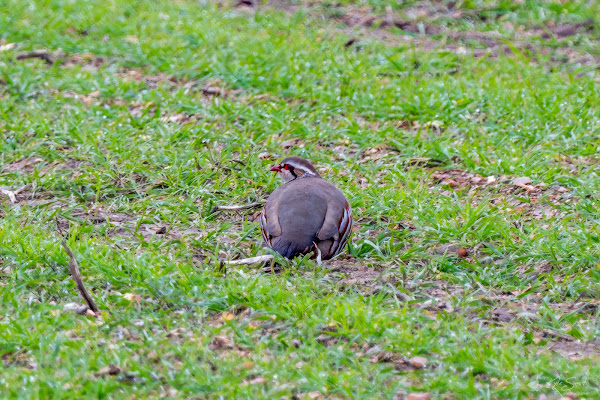With Kev @kev07713 away in Ayrshire with his wife Karen, primarily to see the Myrtle warbler in Kilwinning, I decided to give birding a miss on Saturday as the weather forecast wasn't looking great. Instead, I decided to travel over to Holkham on Sunday to catch up with shore larks - there are frequent reports of sightings, so I thought it'd be a good chance to see them without risking disappointment.
Holkham Gap offers a fantastic opportunity to watch shore larks against the backdrop of the Norfolk coastline - it is part of the Holkham National Nature Reserve which encompasses a variety of habitats including sand dunes, salt marshes, and intertidal flats. The presence of a roped-off area serves as a reminder to beachgoers of the importance of responsible coastal stewardship. Visitors are encouraged to stay on designated trails and observe posted guidelines to minimise their impact on sensitive habitats and wildlife.
Shore larks, also known as horned larks, are birds that mainly inhabit open, barren areas such as sand dunes, beaches, salt marshes, and tundra. In the UK, shore larks are mostly seen during the winter months, especially along coastal areas. They are small songbirds, about the size of a sparrow, with distinctive black markings on their faces, a yellow throat and chest, and a black bib. They also have small "horns" or tufts of feathers on their heads (just visible in the second photo below), which are more prominent in males during the breeding season.
They are known for their ground-feeding habits, often foraging for seeds and insects in open areas, so patience is often helpful when trying to locate and observe them.
Strolling along the beach, I watched for any birds flying overhead. Reaching the roped-off area, I met another birder approaching from the opposite direction, but pausing to scan the surroundings with his scope. He had been searching for a while and had yet to spot any shore larks but mentioned spotting 22 velvet scoters on the sea amongst rafts of common scoters. There were two ringed plovers and a few meadow pipits in the grasses nearby, but no sign of the shore larks. After a wait, I decided to venture down to the water's edge.
Offshore, large rafts of common scoters were visible, and with the help of a scope some of the velvet scoters could be identified, though they were too distant for a photograph. Walking along the water's edge and then through the dunes, I hoped to find a snow bunting, but no such luck.
Returning to the dunes, I scanned the roped-off area from the opposite side and spotted a flock of around a dozen small birds flying through. On closer inspection, I confirmed they were indeed shore larks. They descended in the distance, prompting me to circle back to the other side for a better view. Before making it back I caught sight of the flock once more, this time confirming all members of the flock were shore larks. They landed beyond the roped-off area, and despite my efforts to locate them on the ground, they eluded me. Meanwhile, the number of meadow pipits seemed to be on the rise.
A few other birders arrived, and I let them know the larks were around - a couple stopped with me - I strolled around and after quite a time suddenly the larks were up in the air again and circling round. We all stood still, and they dropped close to begin with but were soon up and off into the roped off area. I worked around but views didn't improve, and I was eventually talking more and more of the same photograph.
I thought I'd get back to the sea and walked with a chap that had been stopped with me for the larks. Watching we picked out a couple of velvet scoters but not as many as earlier; they were still very distant. Velvet scoters are usually identifiable by their striking black plumage with contrasting white patches on their wings. They have a distinctive white patch on their forehead and a yellow knob at the base of their bill, which is more prominent in males. They are migratory birds, breeding in northern coastal regions such as Scandinavia and Russia. During the winter, they migrate south to warmer waters, including coastal areas of the UK. It was a bit tricky viewing at this distance with binoculars, and I was glad to have the opportunity for scope views. A female common scoter bobbed about a bit closer in, but slept constantly with the occasional opening of an eye.
Oystercatchers flew through but there were none by the water - mostly in the sea grasses - perhaps as there were quite a lot of people/dogs out walking.
Before I knew it, lunchtime was upon me, so I headed back to the Visitor Centre to grab a sandwich. While there, I took a moment to check BirdGuides for any local sightings, spotting a report mentioning white-fronted geese on the Freshmarsh so without hesitation, I jumped into the car and drove to the layby said to provide views. However, there I found a different assortment of geese - Canada, greylag, barnacle, and Egyptian. I spotted a brown hare sitting on its hind legs, leisurely preening its fur - I'd wait ...
I waited and waited hoping for a return, but eventually I had to set off for home - stopping when passing what appeared to be a grey partridge. Once out the car it was obvious it was yet another red-legged partridge. I'll find one this year somehow.
Year List: 150















No comments:
Post a Comment